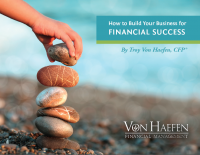
I read an interesting article this weekend in the Wall Street Journal that really got me thinking. The basis of the article was how to profit from the impending inflation that the media is telling us is right around the corner. While I don’t necessarily discount that fact that inflation may be headed our way, I do disagree with the idea of trying to time economic cycles.
If you’re a reader of my blog, you understand that as a holistic, big-picture, fee-only financial advisor I find market timing or economic timing to be a poor choice. If now is the time to sell long bonds due to the threat of inflation, when is the right time to buy? If now is the time to buy small cap stocks, when is the right time to sell? This is the market timer’s dilemma.
I find the best response to the threat of inflation, deflation, or economic prosperity (the only three economic cycles we can face) is to develop a portfolio to handle all three. The difference between my theory and the article is that my theory is designed to be permanently implemented into the portfolio….not a moving target that requires guess work and timing to accomplish the task. Here’s how to handle the three economic cycles.
Inflation – To ward off the effects of inflation there are a couple things investors can do. First, holding cash is a good inflationary hedge. While interest rates rise, the rate paid to you in your interest bearing type accounts will increase.
Secondly, a properly leveraged home (having the right size mortgage) will also provide a buffer against inflation. Imagine this….locking in a long term fixed rate mortgage will allow the owner to pay for tomorrow’s housing cost in today’s dollars. The mortgage payment will not increase while inflation pushes housing cost around you higher.
Economic Prosperity – We don’t want to hedge against economic prosperity; we want to participate. Therefore the best way to participate in an economic upswing is by holding equities. My choice is through low-cost mutual funds and ETFs. If everything is moving along swimmingly in the economic world, which unfortunately is not currently the case, then equities as a whole will rise.
Deflation– deflation is a portfolio killer. Deflation usually creeps up after a strong market cycle, so it often catches do-it-yourself investors holding a larger percentage of equities. The market then tumbles and the investor is devastated due to the large percentage of equity holdings.
The armor required to battle the effects of deflation can be found in two forms: US Treasury Strips and CDs. Both assets hedge against falling interest rates by carrying a locked in or guaranteed rate of return. While Treasury Strips are marketable and can be sold at market rates (meaning at a loss), the idea is to buy and hold until maturity, which guarantees the return. Certainly the same can be accomplished through corporate bond….but with one big disadvantage: security! Need I say more than Enron and Worldcom!
Holding a Treasury strip or CD to maturity may sound boring, but the theory is based on protecting the interest earning side of the portfolio and providing a basis of stability. Little or no risk should be taken on this side of the portfolio. Risk should be saved for the equity portion of the portfolio.
Some of the ideas presented above may lead to a bit of confusion or fog for the non- professional, but that’s okay. The most important fact to take away is to remember that the total portfolio, which includes the primary home, should be designed to participate in a thriving economy, while buffering against the effects of both inflation and deflation. The ideas discussed above are simple and can be effective, and the best part is they are not based on market timing. Timing the market or the economy is not a wise play.
I know it’s the boring approach. I know it won’t make you rich overnight, but it won’t make you broke overnight either! If you are not sure whether your portfolio is designed to handle the three economic environments, it would be wise to speak with an advisor. The Alliance of Cambridge Advisors is a great place to start your search. ACA is a national organization of fee-only advisors that follow this method of investing. To search for an ACA advisor in your area click here.

